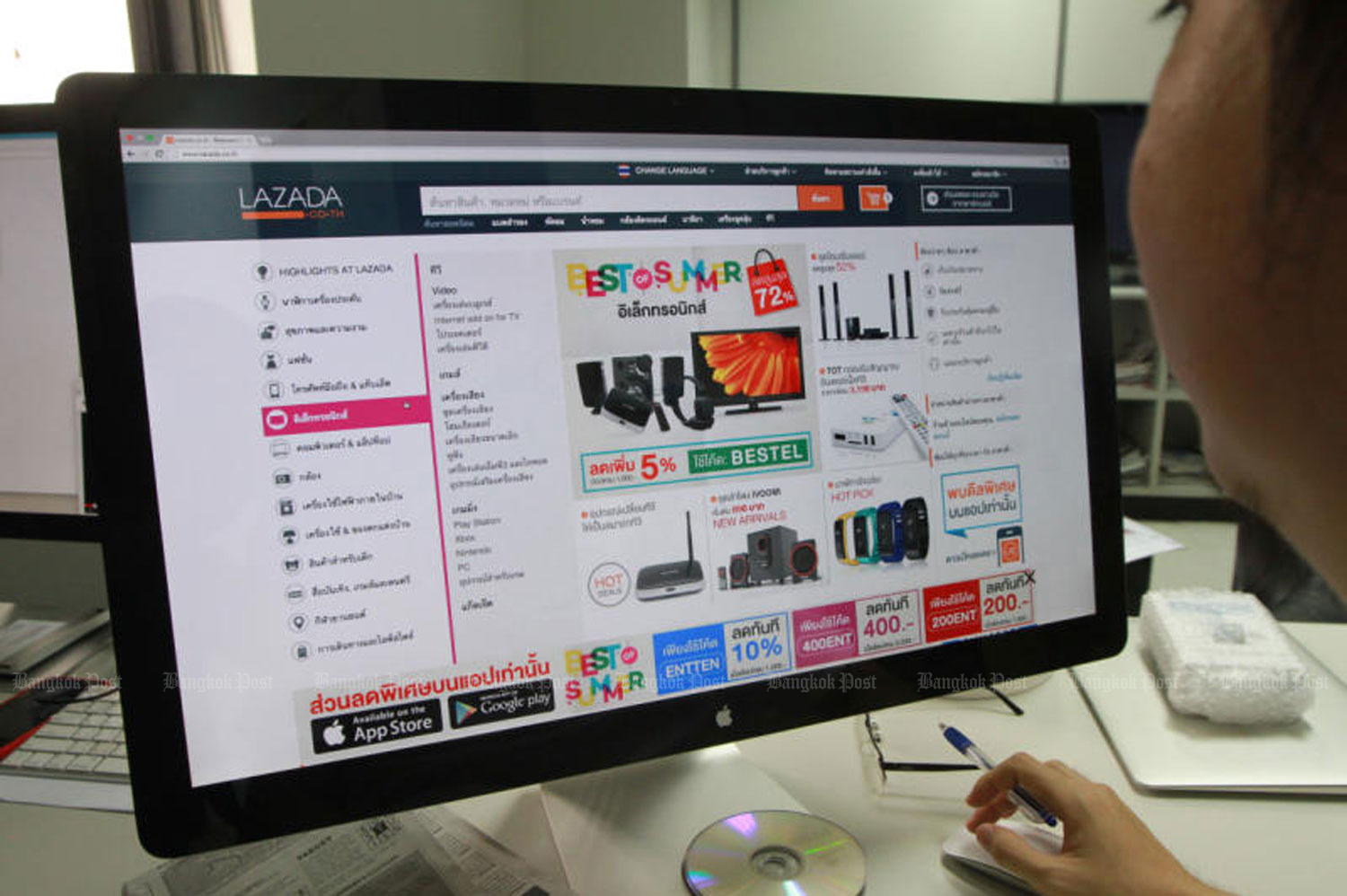
The two leading e-marketplaces in Thailand plan to raise their sales commission fees next month for goods sold on their platforms.
Shopee and Lazada have hiked fees three times in the past two years to improve profitability, noted Pawoot Pongvitayapanu, a local e-commerce pioneer.
Mr Pawoot said Shopee would increase the fee it charges non-mall sellers in mid-October from 4.28% to 5.35%, the second increase in seven months. In April, it doubled the fee from 2.14% to 4.28%.
Lazada will raise the commission fee in its LazMall marketplace for general products and fashion from 6% to 7% on Oct 1, while the fee for electronic goods will increase from 4% to 5%.
In December last year, TikTok started collecting a commission fee of 4% and a transaction fee of 3% from sales made via its popular short-video platform.
Both Lazada and Shopee doubled their fees last year to 2%. They followed in April this year with hikes from 2.14% to between 3.21% and 4.28%, depending on the product category.
More regulation needed?
“Thailand’s e-marketplaces cover 40 million users and there are only two dominant players,” said Mr Pawoot. ““Regulators and policymakers should consider whether this business should be overseen by the government.”
Paul Srivorakul, co-founder and group chief executive of aCommerce, a Southeast Asian e-commerce enabler, said the fee hikes come as no surprise given similar strategies employed by other global e-commerce giants.
He said Southeast Asian brands and merchants, known for their sensitivity to margins, will now be prompted to reconsider their marketing, product and merchandising strategies.
They will explore diversification through avenues like TikTok Shop, adopting direct-to-consumer tactics by establishing their own brand websites using a complete e-commerce platform Shopify, or expanding into omnichannel retailers such as Monline, Lotus’s, Central Group, HomePro and pure-play online retailers like Konvy, NocNoc, GrabMart and Jib, he said.
The opportunity for social commerce, traditional retailers and pure-play online retailers to step in to provide alternatives to brands and merchants is significant, he said.
The cost of advertising, the lifeblood of marketplaces, has also doubled for some brands. While marketplaces remain the largest and most valuable online channels for brands and merchants, they now need to diversify and explore alternative distribution channels that offer profitable growth, ownership of customer data and greater control over the customer experience.
Indian model
Mr Paul said Thailand should consider the e-government platform adopted in India.
According to Reuters, the Indian government launched the Open Network for Digital Commerce last year to enable small and medium-sized enterprises (SMEs) and local stores to access processes and technologies typically deployed by large e-commerce platforms.
The non-profit company’s network currently enables the display of products and services from all participating e-commerce platforms in search results across all apps on the network.
Digital Economy and Society Minister Prasert Jantararuangthong told the Bangkok Post the ministry plans to develop a super-app as an alternative for SMEs to sell their products online.
Visanu Vongsinsirikul, secretary-general of the Trade Competition Commission of Thailand (TCCT), told the Bangkok Post in April this year if it were found that e-marketplaces had raised their fees at the same time, such behaviour might be deemed as violating the Trade Competition Act of 2017 and the TCCT stands ready to take legal action.
Mr Visanu said yesterday he would pass on the results of an investigation into merchants’ complaints about the commission fee hikes of e-marketplaces in April to the TCCT on Sept 28 for its consideration.